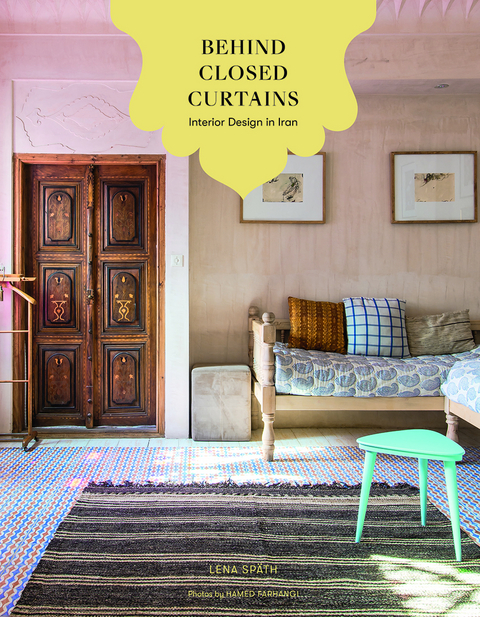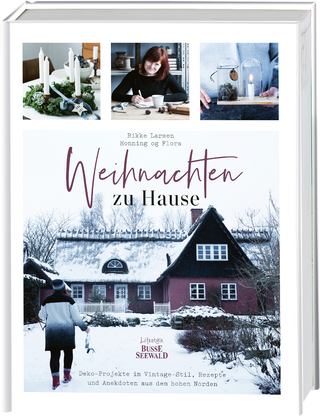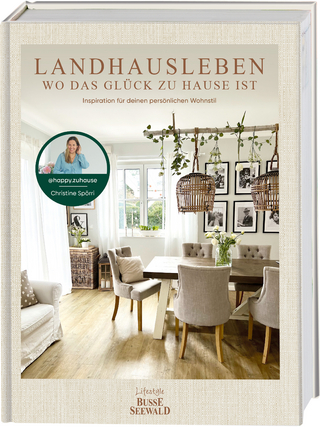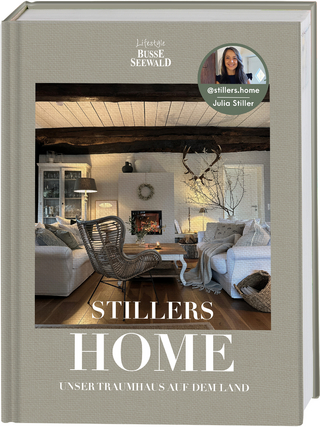
Behind Closed Curtains
Nova MD (Verlag)
978-3-96443-190-5 (ISBN)
- Titel ist leider vergriffen;
keine Neuauflage - Artikel merken
Lena Späth ist freiberufliche Autorin, die zwischen München und Teheran pendelt. Ihr Buch ‚Behind Closed Curtains: Interior Design in Iran‘ erschien 2017 im Eigenverlag. Diverse Medien wie The Guardian, AD Magazine oder Süddeutsche Zeitung berichteten positiv. Lena studierte Nahostwissenschaften und Politik in München und arbeitete zuvor für Startups und Beratungsfirmen.
At some point in my life, I started thinking every nine months something dramatic would happen. First, my mom was diagnosed with cancer; nine months later my boyfriend dumped me, and then nine months after that I was laid off from work. My flatmate and I joked it was hinting at one of us becoming pregnant. But what all this was really leading to was quite different: the decision to write this book. The last event happened in June 2016. After a year without a holiday, it was a good moment to rest and think about what I really wanted to do. Life had been a bit like a washing machine for more than three years. After traveling through South and Central America and moving to Barcelona, I was the person I wanted to be; but I was not doing what I wanted to do. It took me two weeks before waking up one Monday knowing what I would do. My list of ideas and projects had been long, but what I really wanted to do was produce a coffee table book on interior design in Iran - with my own savings and being responsible for every step. No one had done this before, but I knew about the hidden treasures of old Persia. I sometimes wake up and have these epiphanies – it’s as if my brain and heart talk during the night and come up with the perfect solution the next day. When I say Iran, I talk as it were France or Argentina; for me, Iran is like any other country in the world, because I look at the people. I don’t write this book for the country but for the Iranian people. My relationship with Iran started off pretty naively. When I was 19, I wanted to study the Middle East and become a war journalist. The dust and stories in Afghanistan called to me. I didn’t have the courage though and turned to more solid fields, first law and then journalism, only to return to Middle Eastern studies and politics in the end. The upheavals, the adventures, the otherness of the region was too tempting. My father feared I would end up a taxi driver like humanities graduates before me in Germany. But I was stubborn and fell in love with my studies. For the first time in my life, I was learning about things I was really interested in. I read Iran’s history from its kings to its modern-day politics and learned Farsi and the Arabic alphabet, but this was all theory. To really taste the country, feel the atmosphere on my skin, and listen to the sounds of Iran’s streets, I had to go to the country. Germany’s biggest newspaper wrote of the UN general assembly meeting: “The most powerful humans meet in New York to rescue the world - and to insult each other.” It was the height of tensions between the magic triangle, Ahmadinejad-Bush-Netanyahu, and rumors of possible war circulated. I saw all this as part of a big adventure, so in the fall of 2008 I signed up with the German Embassy as a temporary resident in Iran and imagined the worst-case scenario would be being rescued by helicopter; a great story to tell my grandkids. Happy to say, everything went quite differently. I came back without war fanfares, but with loads of books, handcrafts, and a heart lost to an Iranian man. Through him, his friends, music, favourite poems and books, family, coffee shops, slang and stories, I met the real Iran; the Iran in which the great poet Hafez tells you your future, the expression “The New City” revives Tehran’s old red light district, and eating hot beetroot from the city’s viewpoint seems like it can’t get better. What followed again was a life in a washing machine, but without a happy ending. What outlived everything was my love for Iran and its people. Since then I have been to Iran multiple times to inhale Tehran’s emissions, but also the smell of barbecued meat, to talk to the taxi drivers about politics and life here and there, to meet my friends, to travel through its outdoor museum of millenniums, to experience the contrasts between the liberal Iranians and the traditional ones, and to understand the national psyche each time one centimeter more. Every time I was in Tehran, I went to its flea market on Fridays. In 2008, my friends told me it was not a good place to go; they said it was dirty and questioned why I would want to buy something Iranian when I have IKEA and H&M and co. in Europe. Most people didn’t understand my love for traditional design and handicrafts. But today, almost a decade later, things have changed. Young people have started to buy Persian products and are more and more creative. Now one can buy ceramics, jewelry, or even hammocks made in Iran via Instagram. And the Friday Market is so crowded, moving the location should be considered. This is why it is the right time to write a book like this one: look what great architecture the country has, you can be proud of it. Look at these beautiful exterior AND home interiors using Iranian design. This is Persian tradition and knowledge, gathered over centuries, which, if lost - and even if only a bit - also takes a part of every country’s identity. And if it’s lost, it is sometimes just simply lost forever. My heart hurts when I see a traditional house being destroyed and the beauty of Persia vanishing in favor of Roman, Greek or neo-classical copycats. As Nooshin, one of the house owners in this book said, “the beauty of our everyday surroundings makes a difference to our lives.” I am optimistic that, as Iran is in general in constant transition, people’s way of thinking about cultural heritage will adapt. During my work, I meet so many enthusiastic fans of traditional design and architecture who want to change things, who want to combine history and modernity, who don’t think there exists only black or white or a dusty-dirty traditional style or a Western modern one. They are the ones who will prove it is a trend, small at the moment, but gaining traction. Even if young Iranians think the West is the land of opportunities, often the opposite is true. Interior design, furniture manufacturing, renovation, and authentic and sustainable tourism, are all chances in Iran waiting to be seized. It is a common belief that good interior design needs money, yet I don’t agree. Some of the houses in this book are examples of this. The DIY (Do-It-Yourself) approach Amir applies doesn’t need a huge financial budget. The traditional pot he used as a kitchen sink costs just a few euros in any traditional bazaar. At the same time, I don’t claim the houses shown in this book are representative of Iranian homes among all classes. Remembering Maslow, home design is a topic more present in middle and upper-class families. Also, this is not a documentary photo book; our goal was to show examples of great interior design in Iran. This is also the story for foreigners: look what great design one can find in Iran. Take a look at these houses, listen to their owner’s stories, read a little bit about this country, and I am sure you will understand why I fell in love with it. If we succeeded in adding a different nuance to the image you had of Iran before, consider actually living the experience yourself. Some of the following houses might even host you and prepare the famous Iranian kabab I told you about before. This book has become a really personal project. It showed me again, every day over and over the power of humans and their passion because of the support I received within Iran and from all over the world. But more surprisingly because I experienced directly after looking at all these people and my own project that the myth is true, you can achieve everything if you want it enough, have patience, and act. The latest nine months are ending while I am writing this. Let’s see what happens, so far the waters are calm. It seems as if this book has broken the curse and if not, as one of my friends said in the imaginary way Farsi is famous for: “Poostam kande shod. Vali bazi vaghtha khoobe choon puste jadid narm mishe.” meaning “My skin got stripped off. But sometimes this is good, because new skin is soft.” Note: The Persian words in this book are written like Iranians do type them in daily life when using the Latin alphabet. This is academical not correct but makes reading easier. The names of Iranian people are written using the spelling that they themselves would use.
At some point in my life, I started thinking every nine months something dramatic would happen. First, my mom was diagnosed with cancer; nine months later my boyfriend dumped me, and then nine months after that I was laid off from work. My flatmate and I joked it was hinting at one of us becoming pregnant. But what all this was really leading to was quite different: the decision to write this book. The last event happened in June 2016. After a year without a holiday, it was a good moment to rest and think about what I really wanted to do. Life had been a bit like a washing machine for more than three years. After traveling through South and Central America and moving to Barcelona, I was the person I wanted to be; but I was not doing what I wanted to do. It took me two weeks before waking up one Monday knowing what I would do. My list of ideas and projects had been long, but what I really wanted to do was produce a coffee table book on interior design in Iran - with my own savings and being responsible for every step. No one had done this before, but I knew about the hidden treasures of old Persia. I sometimes wake up and have these epiphanies - it's as if my brain and heart talk during the night and come up with the perfect solution the next day. When I say Iran, I talk as it were France or Argentina; for me, Iran is like any other country in the world, because I look at the people. I don't write this book for the country but for the Iranian people. My relationship with Iran started off pretty naively. When I was 19, I wanted to study the Middle East and become a war journalist. The dust and stories in Afghanistan called to me. I didn't have the courage though and turned to more solid fields, first law and then journalism, only to return to Middle Eastern studies and politics in the end. The upheavals, the adventures, the otherness of the region was too tempting. My father feared I would end up a taxi driver like humanities graduates before me in Germany. But I was stubborn and fell in love with my studies. For the first time in my life, I was learning about things I was really interested in. I read Iran's history from its kings to its modern-day politics and learned Farsi and the Arabic alphabet, but this was all theory. To really taste the country, feel the atmosphere on my skin, and listen to the sounds of Iran's streets, I had to go to the country. Germany's biggest newspaper wrote of the UN general assembly meeting: "The most powerful humans meet in New York to rescue the world - and to insult each other." It was the height of tensions between the magic triangle, Ahmadinejad-Bush-Netanyahu, and rumors of possible war circulated. I saw all this as part of a big adventure, so in the fall of 2008 I signed up with the German Embassy as a temporary resident in Iran and imagined the worst-case scenario would be being rescued by helicopter; a great story to tell my grandkids. Happy to say, everything went quite differently. I came back without war fanfares, but with loads of books, handcrafts, and a heart lost to an Iranian man. Through him, his friends, music, favourite poems and books, family, coffee shops, slang and stories, I met the real Iran; the Iran in which the great poet Hafez tells you your future, the expression "The New City" revives Tehran's old red light district, and eating hot beetroot from the city's viewpoint seems like it can't get better. What followed again was a life in a washing machine, but without a happy ending. What outlived everything was my love for Iran and its people. Since then I have been to Iran multiple times to inhale Tehran's emissions, but also the smell of barbecued meat, to talk to the taxi drivers about politics and life here and there, to meet my friends, to travel through its outdoor museum of millenniums, to experience the contrasts between the liberal Iranians and the traditional ones, and to understand the national psyche each time one centimeter more. Every time I w
| Erscheinungsdatum | 30.03.2019 |
|---|---|
| Verlagsort | Deutschland |
| Sprache | englisch |
| Maße | 215 x 275 mm |
| Themenwelt | Kunst / Musik / Theater ► Design / Innenarchitektur / Mode |
| Sachbuch/Ratgeber ► Freizeit / Hobby ► Hausbau / Einrichten / Renovieren | |
| Technik ► Architektur | |
| Schlagworte | Architektur • Bildband • Boho • CouchSurfing • Indien • Innendesign • Iran • Islam • islamisch • Kunst • Marokko • Orient • Persisch • Reise • Teppich |
| ISBN-10 | 3-96443-190-7 / 3964431907 |
| ISBN-13 | 978-3-96443-190-5 / 9783964431905 |
| Zustand | Neuware |
| Haben Sie eine Frage zum Produkt? |
aus dem Bereich


